Italy, a land renowned for its rich history, vibrant culture, and breathtaking landscapes, is also home to over 400 islands, many of which remain hidden gems awaiting discovery.
While famous names like Sicily, Sardinia, and Capri often steal the spotlight, Italy’s secret islands offer a more authentic, serene, and untouched experience. These islands, each with its unique charm, are nestled in various parts of Italy, from the Tyrrhenian Sea to the Venetian Lagoon.
Some of these islands boast therapeutic natural mud baths, black sand beaches, hot springs, and even active volcanic craters, providing a unique blend of relaxation and adventure. Others offer quaint fishermen’s villages, with colorful houses lining the promenades, offering the freshest seafood and captivating ocean vistas.
Tucked away in these lesser-known locales, you’ll find islands with rugged, remote landscapes ideal for divers, hikers, and those seeking tranquility. The absence of cars on some islands enhances the serene atmosphere, allowing visitors to explore on foot or by traditional means like mules.
These secret islands are not just about seclusion and natural beauty; they also offer cultural experiences with whitewashed villages, local commerce, and historical sites like ancient Roman villas and Etruscan strongholds.
The culinary delights are as diverse as the landscapes, ranging from seafood platters to local wines, adding to the sensory pleasures of these hidden retreats.
These Islands are a reminder of Italy’s diverse and rich geographical tapestry, where every island tells a different story, waiting to be discovered by those who seek the path less traveled.
Secret Islands in Italy
1. Giglio, Tuscany
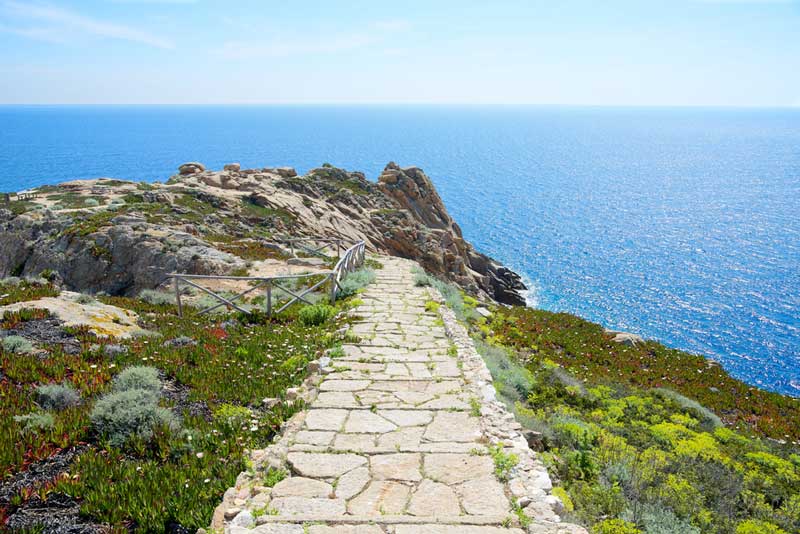
Giglio
Giglio Island, part of the Tuscan Archipelago, is a hidden gem with its three diverse towns: Giglio Porto, Giglio Campese, and Giglio Castello.
Each town offers a unique experience, from bustling local commerce to tranquil beach towns and historical richness evident in its Etruscan and Roman roots. The island is also known for its offshore reefs and underwater archaeological sites.
Pro Tip: Explore the island’s diverse towns to experience a mix of local culture, history, and natural beauty. Don’t miss out on the snorkeling and diving opportunities, which are abundant due to the island’s rich marine life and historical shipwrecks.
Where to Stay: There are various hotels and accommodations on the island, offering a range of experiences from beachfront views to historical settings within Giglio Castello.
Where to Eat: The local cuisine is a highlight, with an emphasis on fresh seafood and traditional Tuscan dishes. Be sure to try the island’s signature white wines, which are a product of the local vineyards.
Getting There: Giglio can be accessed by ferry from the mainland, with regular services running from Porto Santo Stefano in Tuscany. The journey offers beautiful views of the Tuscan coastline and the archipelago.
2. Ponza, Italy
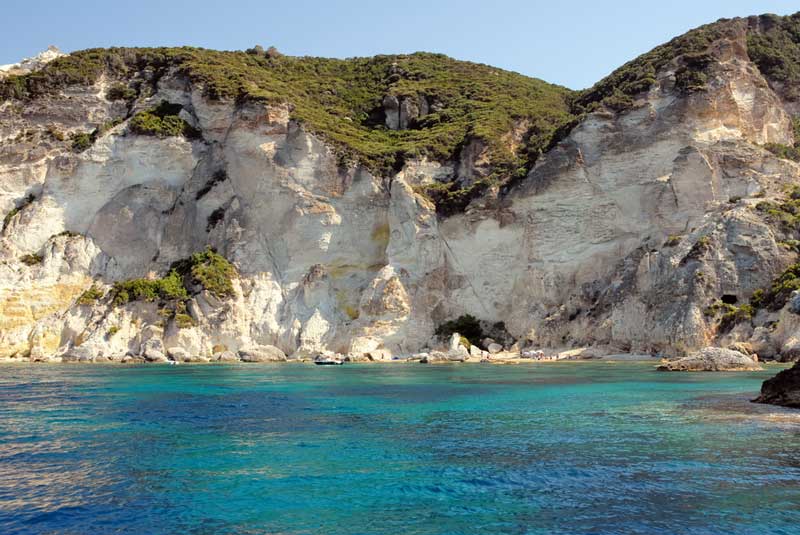
Ponza
Ponza, a stunning island in the Tyrrhenian Sea, captivates visitors with its multicolored homes, crystalline sea, and dramatic cliffs. The island’s wild beauty has enchanted everyone from ancient Romans to contemporary travelers.
Ponza is loved for its historic sites, including the remnants of Roman villas and the Cisterna della Parata, and natural attractions like the Grotte di Pilato, which are ancient Roman fishponds carved into rock.
Pro Tip: Exploring Ponza is best done by renting bikes or scooters, as the island is quite accessible and offers various vantage points for breathtaking views and historical explorations.
Where to Stay: There are numerous hotels and guest houses near the port of Ponza, making it a strategic location for starting your island exploration.
Where to Eat: Ponza’s cuisine is mainly fish-based, featuring dishes like spaghetti with clams, mussels, and octopus. Restaurants like Oresteria, Il Melograno, and La Pazzaria offer a range of delicious local flavors.
Getting There: Ponza can be reached from Rome by catching a Trenitalia train to cities like Anzio, Formia, or Terracina, followed by a ferry down to the island. The Laziomar and Libera Navigazione del Golfo ferries connect the island from Formia and Terracina all year round, with hydrofoils operating in the summer.
3. Pantelleria, Italy
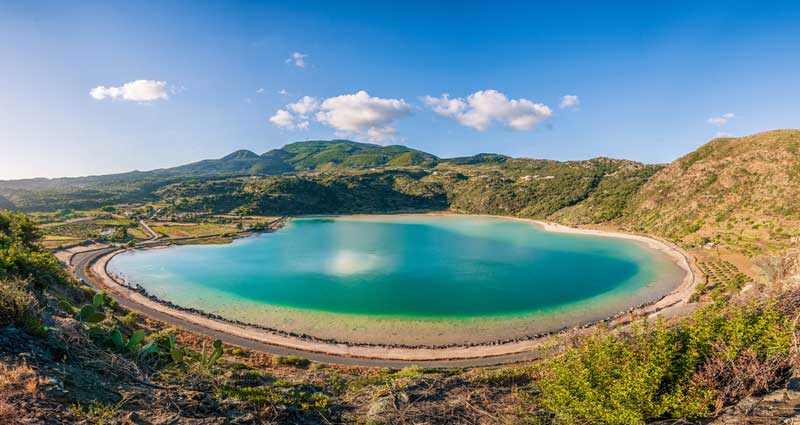
Pantelleria
Pantelleria, closer to Tunisia than Sicily, is a unique island known for its natural hot springs, caves, and distinctive landscape featuring olive and fig fields. This island offers a mix of Italian and African cultural influences, adding to its exotic charm.
Pro Tip: Don’t miss the opportunity to explore the island’s natural wonders, like the hot springs, and enjoy the local cuisine, which is a blend of Italian and African flavors.
Where to Stay: The island offers a range of accommodation options, from luxury villas to more budget-friendly choices. Look for properties that offer views of the Mediterranean and easy access to the island’s natural attractions.
Where to Eat: Embrace the local culinary scene, which is known for its unique blend of Italian and North African flavors. Fresh seafood, along with locally produced olive oil and capers, are must-try items.
Getting There: Pantelleria can be reached by ferry from Sicily or by a short flight from major Italian cities like Milan and Rome. The island’s airport is well-connected during the tourist season.
4. Panarea, Italy
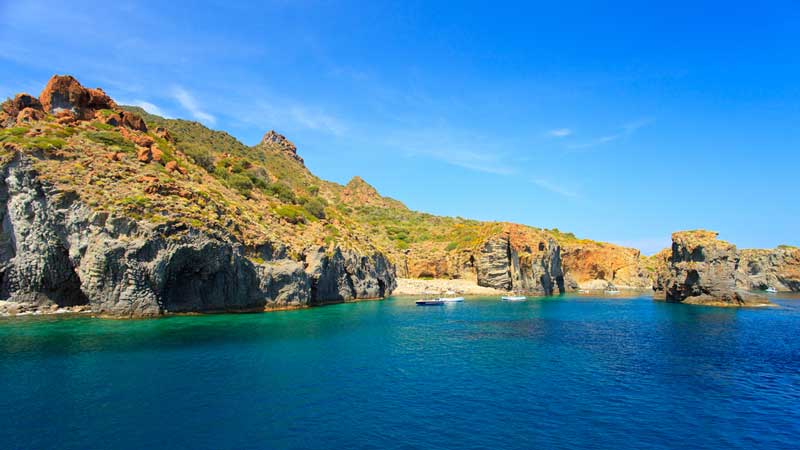
Panarea
Panarea, the second smallest of the Aeolian Islands, is a volcanic island off Sicily’s northeastern coast. Known for its beaches, scenery, and a celebrity hotspot, it’s a mix of glamour and natural beauty.
The town of San Pietro is the heart of the island, with white houses detailed in blue. Key attractions include exploring the winding streets of San Pietro, hiking to Spiaggia della Calanca and Cala Junco, and enjoying the beautiful beaches accessible by boat.
Pro Tip: Rent a boat to explore the surrounding waters and secluded beaches. The island is also perfect for hiking and enjoying the serene natural environment.
Where to Stay: Accommodation options in Panarea range from the famous Hotel Raya to budget-friendly options like Hotel Tesoriero. Most accommodations are within walking distance of the port in San Pietro.
Where to Eat: Panarea offers a variety of dining options. For local specialties, try Ristorante Da Pina, and for dining with a view, the Hotel Raya Restaurant & Roof Terrace is an excellent choice.
Getting There: Reach Panarea by hydrofoils and ferries from major ports in Southern Italy, including Messina, Milazzo, Reggio Calabria, and Palermo.
5. Vulcano, Italy
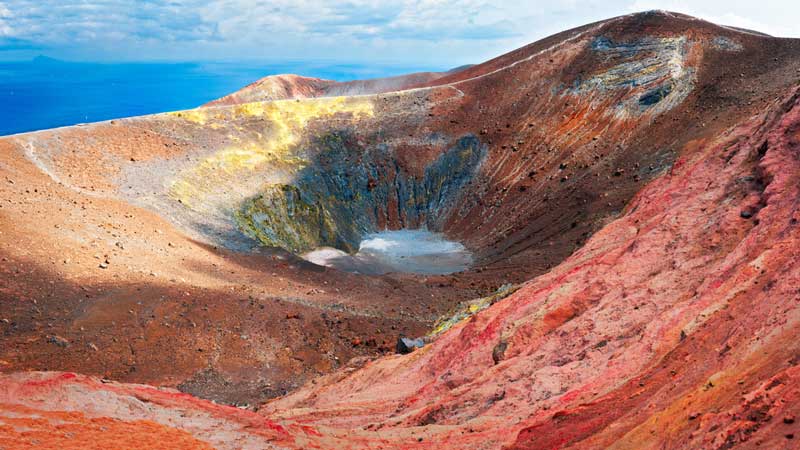
Vulcano
Vulcano, another Aeolian Island, is renowned for its volcanic landscapes, including therapeutic natural mud baths, black sand beaches, and the steaming Gran Cratere. It offers a unique blend of adventure and relaxation, making it a great destination for nature lovers.
Pro Tip: Take advantage of the island’s natural spas and hike to the Gran Cratere for spectacular views. Remember to bring comfortable shoes for exploring the rugged terrain.
Where to Stay: Look for accommodations that offer views of the volcano and the sea. There are various hotels and resorts on the island that cater to different budgets and preferences.
Where to Eat: The island’s cuisine highlights local produce, especially seafood. Many restaurants offer dishes featuring freshly caught fish, complemented by local wines.
Getting There: Vulcano can be reached by ferry from the Sicilian mainland or other Aeolian Islands. The most common departure points are Milazzo and Messina.
6. Pellestrina, Italy
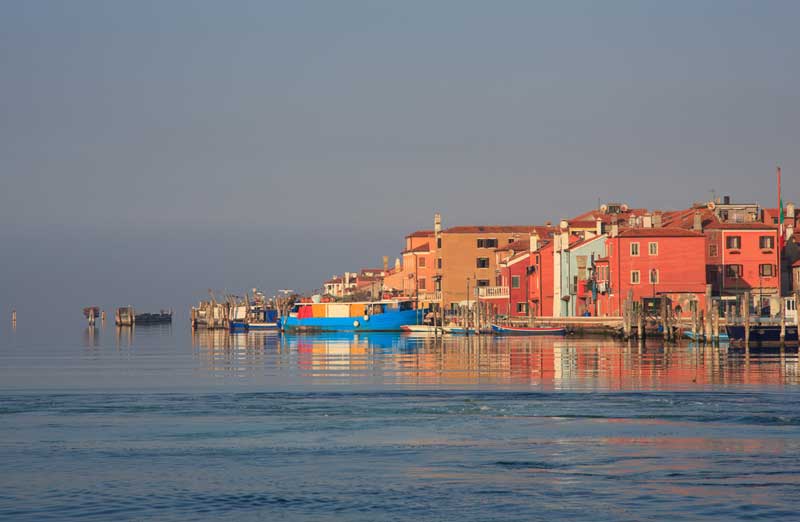
Pellestrina
Pellestrina is a narrow island in the Venetian Lagoon, offering a serene escape from Venice’s hustle and bustle. It’s known for its picturesque, colorfully painted houses and a tranquil atmosphere, making it a perfect destination for a peaceful retreat.
Pro Tip: Explore the island by bike or on foot to discover its charming landscapes and authentic local life. The island is also great for bird watching and enjoying quiet beaches.
Where to Stay: There are charming inns and B&Bs that provide a cozy, authentic experience of island life. Look for accommodations with lagoon views for a memorable stay.
Where to Eat: Enjoy fresh seafood and traditional Venetian cuisine at local restaurants. The island’s eateries are popular among locals, offering a genuine taste of the region’s culinary delights.
Getting There: Pellestrina can be reached by water bus (vaporetto) from Venice. The journey itself is scenic, offering beautiful views of the Venetian Lagoon.
7. Marettimo, Italy
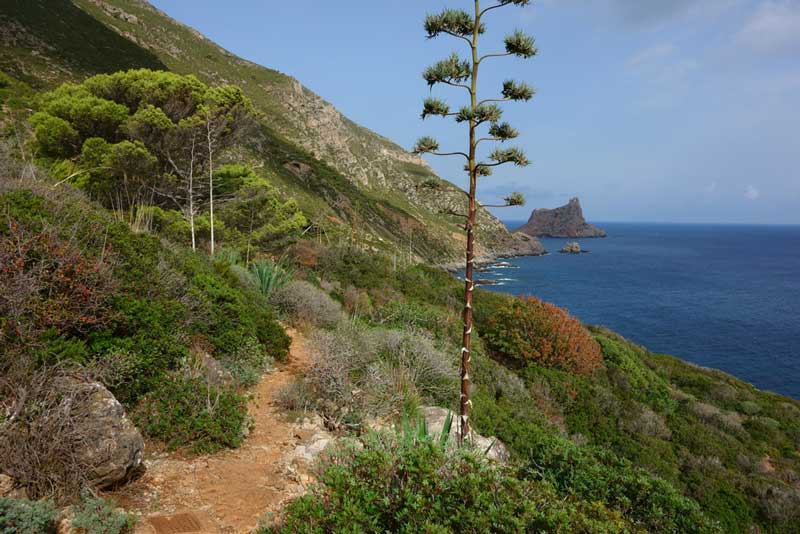
Marettimo
Marettimo, the westernmost of the Egadi Islands near Sicily, is an unspoiled oasis perfect for those seeking tranquility and natural beauty. With a small port surrounded by white houses and turquoise waters, Marettimo is a haven for hikers and sea lovers.
The island is rich in history and has numerous archaeological sites, including Roman ruins and a Spanish fort. Its rugged, mountainous landscape is covered in thick scrub, providing an ideal environment for various hiking trails.
Pro Tip: Marettimo is a paradise for hiking enthusiasts. The island offers a range of well-marked trails leading to stunning viewpoints like Pizzo Falcone and Punta Basano. Don’t forget comfortable hiking shoes to explore these paths.
Where to Stay: Accommodation options on Marettimo are somewhat limited but charming. Options like Marettimo Residence offer a blend of simplicity and comfort, with apartments set in a Mediterranean garden.
Where to Eat: The island’s cuisine focuses on fresh fish and seafood. Enjoy traditional dishes like spaghetti with sardines and fish soup in the local restaurants.
Getting There: Marettimo is about 90 minutes by ferry from Trapani or Marsala. The closest airports are in Trapani and Palermo, with Trapani being the more convenient option.
8. Favignana, Italy
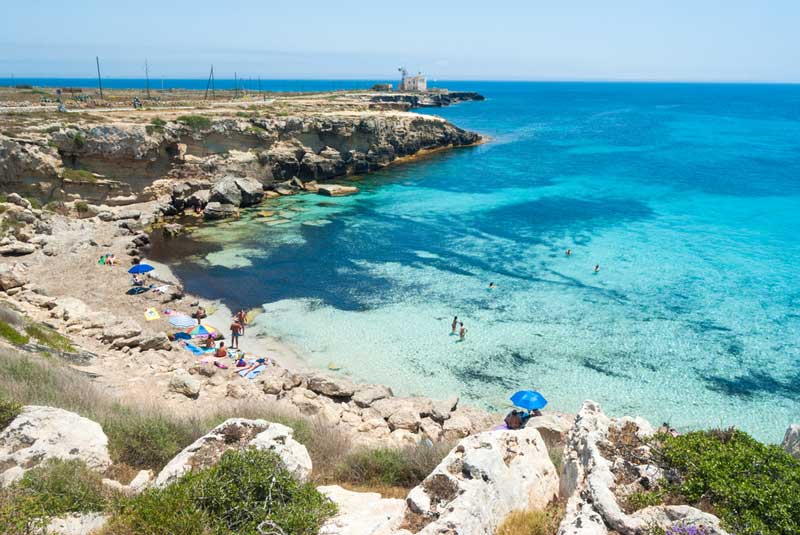
Favignana
Favignana, the largest of the Egadi Islands, is a breathtaking Italian island known for its crystal-clear turquoise waters, picturesque beaches, and charming town. The island’s coastline, lined with craggy cliffs, caves, and abandoned rock quarries, is visually striking. Favignana’s flat terrain makes it ideal for exploration by bicycle, the most popular mode of transport here.
Pro Tip: Rent a bike as soon as you arrive on the island, especially if you want an e-bike. Rentals can be around €10 per day. Also, don’t forget to bring water shoes as the coastline is rocky.
Where to Stay: Favignana offers various accommodation options, from simple modern rooms near the town to more traditional guesthouses. “Casa Mirella” is a highly recommended place, offering beautifully designed apartments close to the main town. Other options include “Dimora Delle Tonnare” and “Mazzini Accomodation” for those who prefer staying in the heart of town.
Where to Eat: The island cuisine focuses on fresh seafood. “Cibo Chiacchiere e Vino” is great for sunset aperitivos, while “La Pasticceria” is the go-to bakery. For a more formal dining experience, “Osteria Sotto Sale” specializes in seafood, and “Quello Che C’E C’E Ristorante Mediterraneo” is known for its fresh fish.
Getting There: Favignana is easily reachable via a short ferry ride from Trapani, Sicily. The closest airports are Trapani-Birgi and Palermo Falcone Borsellino. Buses and taxis are available from these airports to Trapani port, where you can catch the ferry to Favignana.
9. Giannutri, Italy
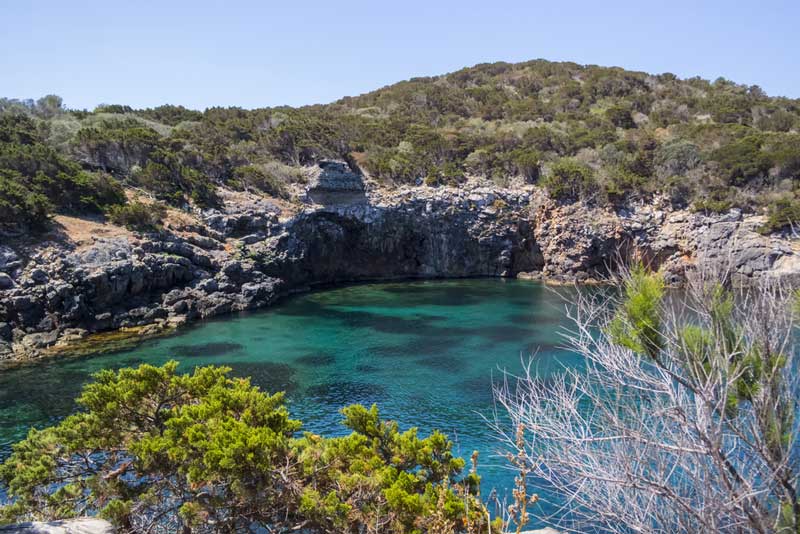
Giannutri
Giannutri, the southernmost island of the Tuscan Archipelago, is a breathtaking destination that combines natural beauty with historical richness. Known for its chalky white crescent shape, the island boasts a biodiverse seabed frequented by dolphins and fin whales.
Its rugged terrain is dominated by dense Mediterranean shrubbery, and the island is home to impressive remains of a second-century Roman villa. The Tuscan Archipelago Park, encompassing Giannutri, divides the island into two zones, with Zone A being a strict nature reserve.
Pro Tip: Due to its protected status, some areas of Giannutri are restricted. To fully explore the island and access its historic sites, it’s recommended to join a guided tour. Also, remember to bring essentials like water and food, as the island lacks significant commercial services.
Where to Stay: Accommodations on Giannutri are limited and mainly operate during the summer. Visitors can find a few public lodgings near Cala dello Spalmatoio, offering a close connection with nature.
Where to Eat: Given the island’s limited commercial development, dining options are scarce. Visitors should plan accordingly, perhaps bringing their own meals to enjoy amid the island’s scenic backdrop.
Getting There: Ferries to Giannutri depart from Porto Santo Stefano, with a more frequent schedule during the summer. The journey allows visitors to enjoy the serene beauty of the Tyrrhenian Sea.
10. La Maddalena, Italy
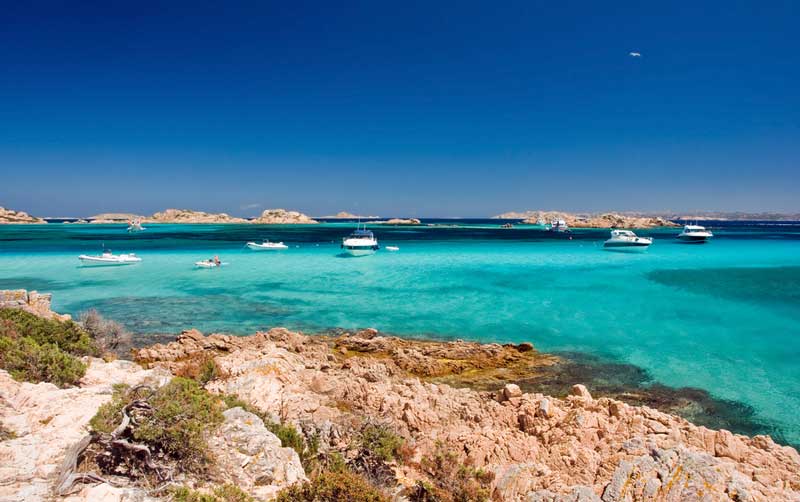
La Maddalena
La Maddalena, the largest island in the Maddalena archipelago off Sardinia, is a picturesque destination known for its stunning beaches and rich history.
With a landscape comprising white sandy beaches and crystal-clear waters, the island offers a serene escape from the hustle of tourist hotspots.
La Maddalena’s history is fascinating, marked by events such as Napoleon’s attempted invasion and being the retirement place of Italian hero Giuseppe Garibaldi.
Pro Tip: Explore the island by boat to discover secluded coves and beaches. A visit to the Garibaldi Museum on nearby Caprera Island is highly recommended for history enthusiasts.
Where to Stay: The island offers a range of accommodations, from boutique hotels to charming bed and breakfasts, many providing beautiful views of the sea.
Where to Eat: The local cuisine features fresh seafood and traditional Sardinian dishes. Don’t miss trying the delicious fish soup, spaghetti with sea urchins, and the unique dessert, u curconi.
Getting There: La Maddalena is accessible via ferry from Palau on Sardinia’s mainland. The journey is not only convenient but also scenic, offering views of the archipelago and the Sardinian coast.
Final Thoughts
Italy’s lesser-known islands offer a unique blend of serene beauty, rich history, and cultural authenticity, far from the bustling tourist hubs.
These hidden gems, scattered across Italy’s vast seascape, are perfect retreats for those seeking tranquility, unspoiled natural landscapes, and a taste of traditional Italian life.
Each island, with its distinct charm and character, provides an opportunity to reconnect with nature, explore ancient ruins, and indulge in local gastronomic delights.
These destinations are ideal for travelers eager to venture off the beaten path and immerse themselves in Italy’s diverse and rich geographical tapestry, where every island tells its own captivating story.
